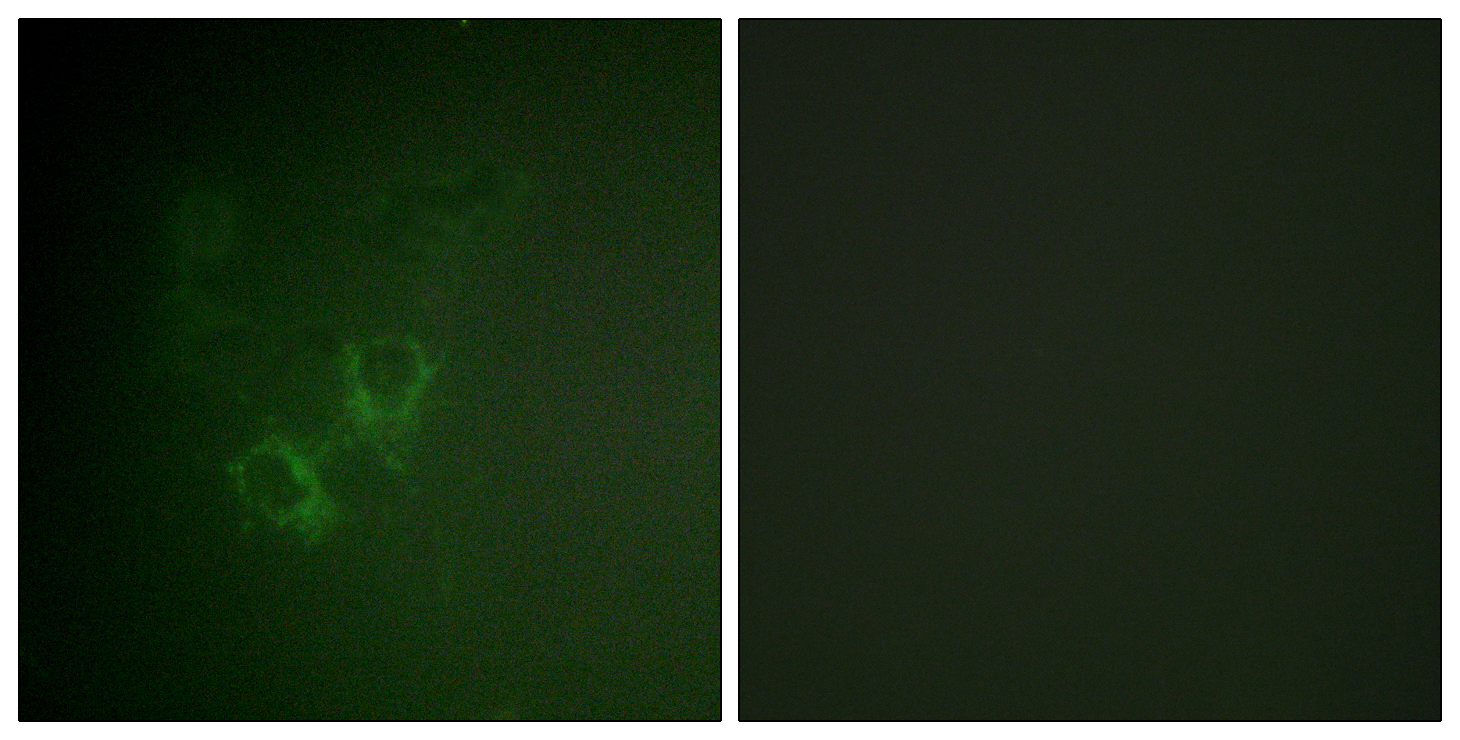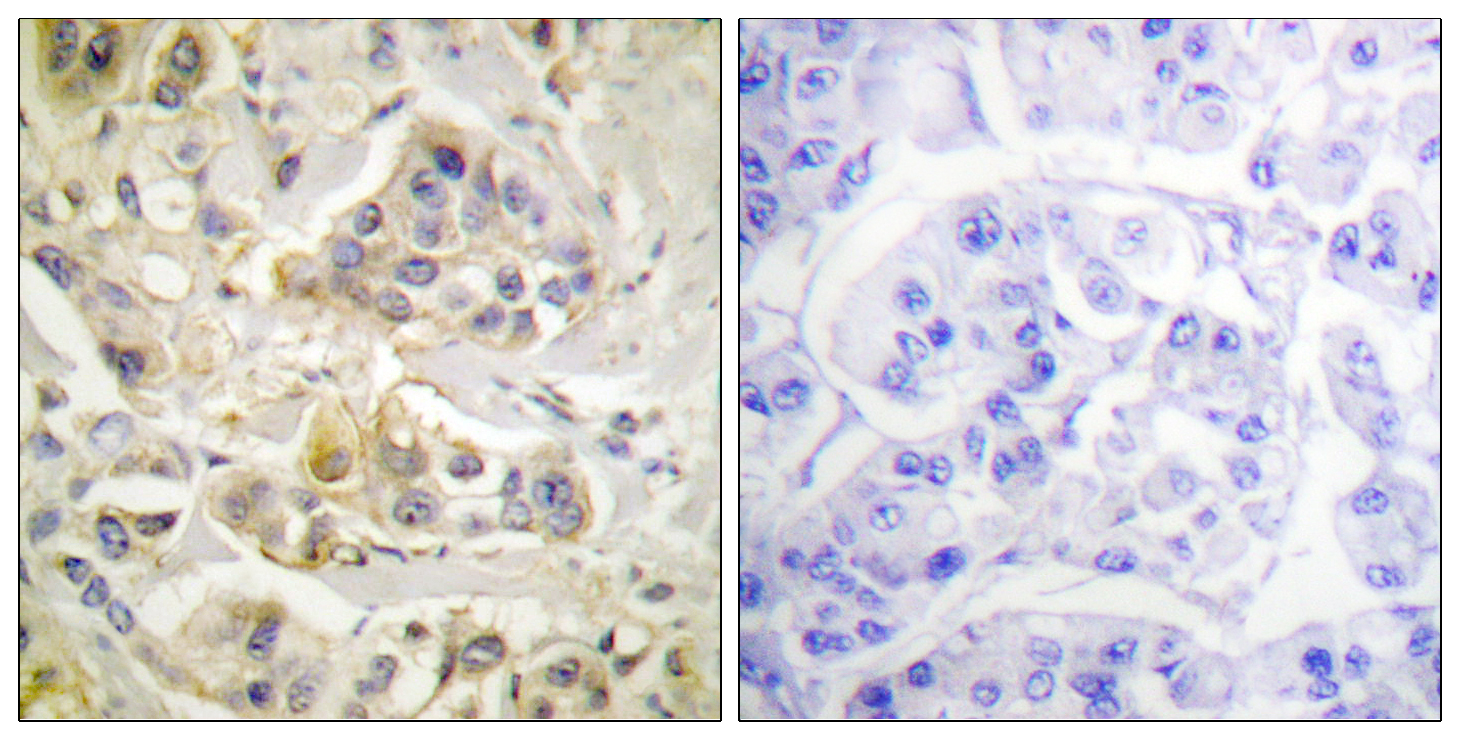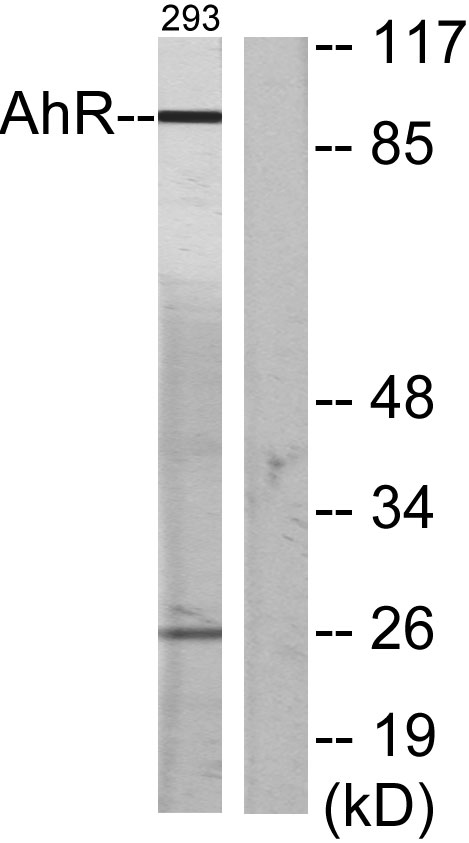Ah Receptor Polyclonal Antibody
- Catalog No.:YT0145
- Applications:WB;IHC;IF;ELISA
- Reactivity:Human;Mouse;Rat
- Target:
- Ah Receptor
- Fields:
- >>Th17 cell differentiation;>>Cushing syndrome;>>Chemical carcinogenesis - receptor activation;>>Chemical carcinogenesis - reactive oxygen species
- Gene Name:
- AHR
- Protein Name:
- Aryl hydrocarbon receptor
- Human Gene Id:
- 196/57491
- Human Swiss Prot No:
- P35869/A9YTQ3
- Mouse Gene Id:
- 11622/11624
- Rat Gene Id:
- 25690/498999
- Rat Swiss Prot No:
- P41738/Q75NT5
- Immunogen:
- The antiserum was produced against synthesized peptide derived from human AhR. AA range:2-51
- Specificity:
- Ah Receptor Polyclonal Antibody detects endogenous levels of Ah Receptor protein.
- Formulation:
- Liquid in PBS containing 50% glycerol, 0.5% BSA and 0.02% sodium azide.
- Source:
- Polyclonal, Rabbit,IgG
- Dilution:
- WB 1:500 - 1:2000. IHC 1:100 - 1:300. IF 1:200 - 1:1000. ELISA: 1:20000. Not yet tested in other applications.
- Purification:
- The antibody was affinity-purified from rabbit antiserum by affinity-chromatography using epitope-specific immunogen.
- Concentration:
- 1 mg/ml
- Storage Stability:
- -15°C to -25°C/1 year(Do not lower than -25°C)
- Other Name:
- AHR;BHLHE76;Aryl hydrocarbon receptor;Ah receptor;AhR;Class E basic helix-loop-helix protein 76;bHLHe76;AHRR;BHLHE77;KIAA1234;Aryl hydrocarbon receptor repressor;AhR repressor;AhRR;Class E basic helix-loop-helix protein 77;bHL
- Observed Band(KD):
- 75 or 96kD
- Background:
- The protein encoded by this gene is a ligand-activated helix-loop-helix transcription factor involved in the regulation of biological responses to planar aromatic hydrocarbons. This receptor has been shown to regulate xenobiotic-metabolizing enzymes such as cytochrome P450. Before ligand binding, the encoded protein is sequestered in the cytoplasm; upon ligand binding, this protein moves to the nucleus and stimulates transcription of target genes. [provided by RefSeq, Sep 2015],
- Function:
- function:Ligand-activated transcriptional activator. Binds to the XRE promoter region of genes it activates. Activates the expression of multiple phase I and II xenobiotic chemical metabolizing enzyme genes (such as the CYP1A1 gene). Mediates biochemical and toxic effects of halogenated aromatic hydrocarbons. Involved in cell-cycle regulation. Likely to play an important role in the development and maturation of many tissues.,induction:Induced or repressed by TGF-beta and dioxin in a cell-type specific fashion. Repressed by cAMP, retinoic acid, and TPA.,similarity:Contains 1 basic helix-loop-helix (bHLH) domain.,similarity:Contains 1 PAC (PAS-associated C-terminal) domain.,similarity:Contains 2 PAS (PER-ARNT-SIM) domains.,subcellular location:Initially cytoplasmic; upon binding with ligand and interaction with a HSP90, it translocates to the nucleus.,subunit:Binds MYBBP1A (By similarity)
- Subcellular Location:
- Cytoplasm . Nucleus . Initially cytoplasmic; upon binding with ligand and interaction with a HSP90, it translocates to the nucleus. .
- Expression:
- Expressed in all tissues tested including blood, brain, heart, kidney, liver, lung, pancreas and skeletal muscle. Expressed in retinal photoreceptors (PubMed:29726989).
Porphyromonas gingivalis infection promotes inflammation via inhibition of the AhR signalling pathway in periodontitis
Copper nanoparticles lead to reproductive dysfunction by affecting key enzymes of ovarian hormone synthesis and metabolism in female rats ECOTOXICOLOGY AND ENVIRONMENTAL SAFETY Yinglun Li WB Rat ovaries
- June 19-2018
- WESTERN IMMUNOBLOTTING PROTOCOL
- June 19-2018
- IMMUNOHISTOCHEMISTRY-PARAFFIN PROTOCOL
- June 19-2018
- IMMUNOFLUORESCENCE PROTOCOL
- September 08-2020
- FLOW-CYTOMEYRT-PROTOCOL
- May 20-2022
- Cell-Based ELISA│解您多样本WB检测之困扰
- July 13-2018
- CELL-BASED-ELISA-PROTOCOL-FOR-ACETYL-PROTEIN
- July 13-2018
- CELL-BASED-ELISA-PROTOCOL-FOR-PHOSPHO-PROTEIN
- July 13-2018
- Antibody-FAQs
- Products Images

- Western Blot analysis of various cells using Ah Receptor Polyclonal Antibody

- Immunofluorescence analysis of HeLa cells, using AhR Antibody. The picture on the right is blocked with the synthesized peptide.

- Immunohistochemistry analysis of paraffin-embedded human breast carcinoma tissue, using AhR Antibody. The picture on the right is blocked with the synthesized peptide.

- Western blot analysis of lysates from 293 cells, using AhR Antibody. The lane on the right is blocked with the synthesized peptide.



